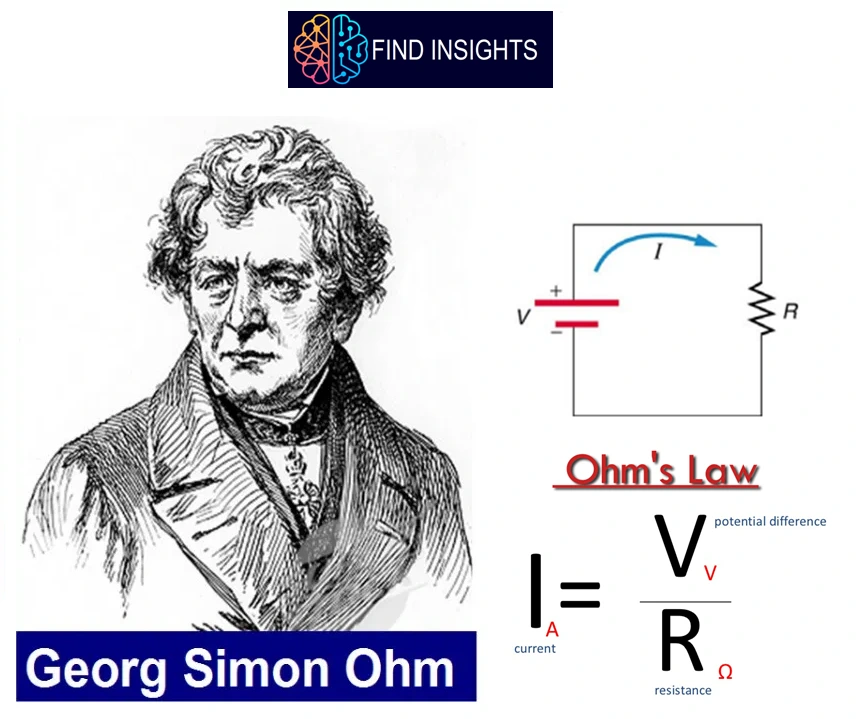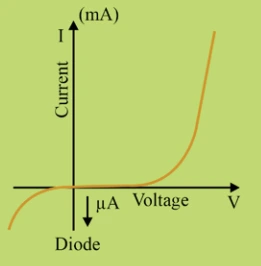
Introduction:
Ohm’s law is a central concept to most electrical engineering theories. In this article let’s see about the limitations of Ohm’s Law, Ohms Law Definition, Formula, Explanation & its application.
Limitations of Ohm’s Law:
The following are the limitations of Ohm’s Law
- Ohm’s law is valid only if the physical conditions like temperature, pressure remain constant.
- Ohm’s law is not applicable to non-metallic conductors. For example, for silicon carbide, the relationship is given by V = k In , where k and n are constants. This relation is not linear.
- Ohm’s law is also not applicable to non – linear elements. Non-linear elements are those which do not have current exactly proportional to the applied voltage that means the resistance value of those elements changes for different values of voltage and current. Examples of non – linear elements are the thyristor.
- Since the resistance also depends on the length and area of cross section of conductor, so for the application of Ohm’s law the dimensions of conductor should remain constant.
- This law cannot be applied to unilateral networks. A unilateral network has unilateral elements like diode, transistors, etc., which do not have same voltage current relation for both directions of current.
- The relation between V and I depends on the sign of V. In other words, if I is the current for a certain V, then reversing the direction of V keeping its magnitude fixed, does not produce a current of the same magnitude as I in the opposite direction. This happens for example in the case of a diode.
For Non – Ohmic Conductors V is not proportional to I

Let’s see in detail about Ohm’s Law.
Ohm’s Law

What is Ohm’s Law?
Ohm’s law is a central concept to most electrical engineering theories. In 1825-26, The relationship between current (I), voltage (V) and resistance (R) was discovered by a German scientist named Georg Ohm. In this honor this relationship is named Ohm’s law. Ohm’s Law became the basis for Kirchhoff’s Voltage and Current law in 1845.
Ohm’s Law Definition:
According to Ohm’s law “Potential difference across a conductor is directly proportional to the current flowing through the conductor, the temperature of the conductor remains constant”.

Ohm’s Law Formula:
V∝ I
V = IR
Where R is the constant of proportionality is known as resistance,
V/I = R (resistance in ohms)
I = V/R
V and I represent constant value of current and voltage.
Ohm’s Law Equation:
To find the Voltage, (V)
[ V = I x R ] V (volts) = I (amps) x R (Ω)
To find the Current, (I)
[ I = V ÷ R ] I (amps) = V (volts) ÷ R (Ω)
To find the Resistance, (R)
[ R = V ÷ I ] R (Ω) = V (volts) ÷ I (amps)

Ohm’s Law Triangle

Resistance (R)
It is the property of any substance due to which it opposes the flow of current through it. It has the same role in electric circuit as that of friction in mechanical system. This opposition is basically due to the molecular structure of the substance. When electrons flow through any substance then they collide with the other molecules or atoms of the substance. In each collision, some energy is dissipated in the form of heat. So, we can say due to resistance some energy is wasted in the form of heat (which is given by I2 Rt).
Factors on which the resistance of a conductor depends:
The resistance of a conductor depends on the cross sectional area of the conductor, the length of the conductor, and its resistivity.
What is Resistance?
The resistance is defined as the ratio of voltage and current in any circuit.
SI unit of resistance – Ohm (Ω).
Resistance Formula R= V/I ohm (Ω)
Voltage (V):
It is a measure of the potential difference between two points as it is applied across a wire or an electric component.
Voltage Formula V = I x R (V)
SI unit Of Voltage – Volt (V)
Current(I):
Current refers to the amount of charges that flow in any part of the conductor per time interval.
SI unit of electric current – Ampere
In equation form, electric current I is defined to be
I = ΔQ/ΔT , where ΔQ is the amount of charge passing through a given area in time Δt .
Application of Ohm’s Law
The main applications of Ohm’s law are:
- To determine the voltage, current or resistance of an electrical circuit.
- Ohm’s law maintains the desired voltage drop across electronic components.
- Ohm’s law is also used in the DC ammeter and other DC shunts to shunt current.
Calculating Electrical Power Using Ohm’s Law
The energy is converted from the electrical energy of moving charges to some other form of energy such as mechanical energy, heat energy, or energy stored in magnetic fields or electric fields is known as electrical power. The unit of power is the watt. power can be calculated using Ohm’s law and substituting voltage, current, and resistance values.
Power formula
- If the value for voltage and current are given: P = VI
- When the values for voltage and resistance are given: P = V2 / R
- If the values for current and resistance are given: P = I2R
LIKE WHAT YOU’RE READING?
CHECK OUT SOME OF OUR OTHER GREAT CONTENT HERE:
- STRAIN GAUGE WORKING PRINCIPLE
- LVDT- CONSTRUCTION, WORKING PRINCIPLE , APPLICATIONS, ADVANTAGES, AND DISADVANTAGES
- SCR VI CHARACTERISTICS EXPLAINED IN DETAIL
- STEP UP TRANSFORMER: DEFINITION, CONSTRUCTION, WORKING & APPLICATIONS
- INDUCTION MOTOR: WORKING PRINCIPLE, TYPES & APPLICATION
- WORKING OF VACUUM CIRCUIT BREAKER
- WHAT IS OPERATING SYSTEM AND ITS TYPE
- TYPES OF LIGHTNING ARRESTER
- HOW DOES A CAPACITOR WORKS
- WHAT ARE THE USES OF CAPACITOR
- WHAT ARE THE APPLICATIONS OF OP AMP?
- HOW AN IGBT WORKS?
- VARIOUS USES OF A RESISTOR
- HOW THE MOSFET WORKS?
- POWER FACTOR IMPROVEMENT METHODS
- WORKING PRINCIPLE OF SYNCHRONOUS MOTOR
- SYNCHRONOUS MOTOR STARTING METHOD
- WHY THE SYNCHRONOUS MOTOR IS NOT SELF STARTING




11 Comments